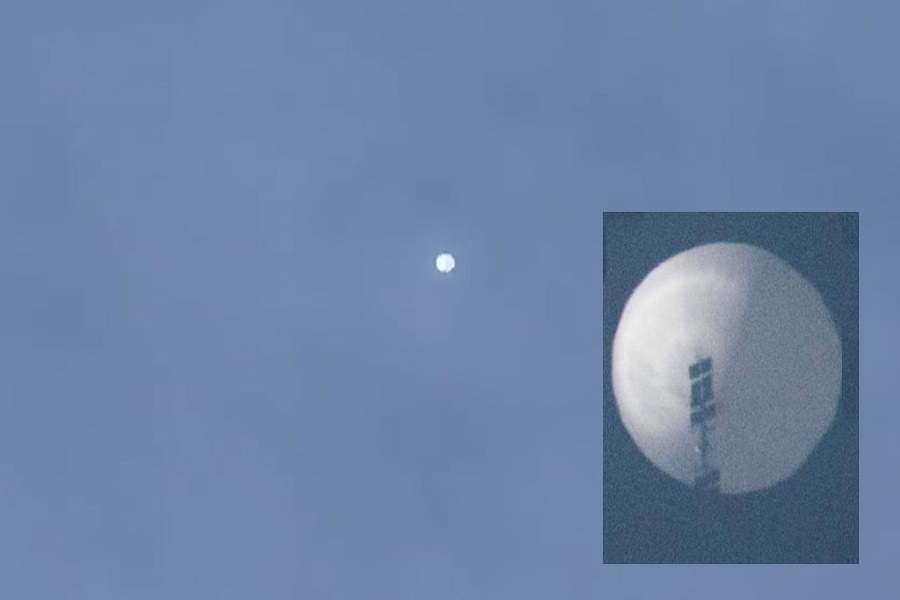
NORAD jets were scrambled today for a mystery balloon flying over airspace of the U.S. west; due to its size, payload, and location, experts say its unlikely to be a weather balloon. NORAD, the military command responsible for air defense over the US says their jets intercepted the balloon over Utah after it was spotted over Colorado drifting east. A similar incident happened last February, when a balloon from China drifted over the United States; the U.S. military eventually shot it down saying it was a spycraft, but China said it was merely a weather balloon gone astray. The U.S. went on to shoot down 4 unidentified flying objects over a three day period last winter; one was believed to be a $12 hobbyist balloon.
NORAD says they will continue to track the balloon as it heads south and east; an unnamed official told CBS News that the balloon was expected to be over Georgia tonight.
The FAA said the balloon poses no hazard to flight safety.
NORAD says the balloon is floating between 43,000 and 45,000 feet; NORAD has determined that it isn’t maneuverable and will simply float along in the winds high above the Earth’s surface. The balloon appears to be Mylar in nature and is carrying a payload that’s roughly a 2 foot cube. It is not known what the payload is for.
It is not known where this balloon came from or if it’s a hobbyist balloon.
While more and more hobbyists are experimenting with these balloons, the National Weather Service is by far the largest user / launcher of them across North America. By supplementing data captured by weather satellites, the National Weather Service launches at least 2 mission critical balloon launches every day, and sometimes more when conditions warrant, from its offices around the United States and its territories and possessions.
The weather balloon carries a device called a radiosonde high into the atmosphere to collect important data. The radiosonde is a small, expendable instrument package that is suspended about 80 feet below a large balloon inflated with hydrogen. As the radiosonde rises at about about 1,000 feet/minute, sensors on it measure profiles of pressure, temperature, and relative humidity. These sensors are linked to a battery powered radio transmitter that sends the sensor measurements to a sensitive ground tracking antenna. Wind speed and direction aloft are also obtained by tracking the position of the radiosonde in flight using GPS or a radio direction finding antenna. The radio signals received by the tracking antenna are converted to meteorological values and from these data significant levels are selected by a computer, put into a special code form, and then transmitted to data users. High vertical resolution flight data, among other data, are also archived and sent to the NOAA National Climatic Data Center.
When released, the weather balloon is about 5 feet in diameter. As it rises into thin air, it gradually expands as a result of the difference in air pressure with the balloon and the air that surrounds it. When the balloon reaches a diameter of 20 to 25 feet in diameter, it bursts. A small parachute slows the descent of the radiosonde, minimizing the danger to lives and property of the small lightweight device.
And there it goes!
We captured today’s @noaa weather balloon launch that’ll not only help w/global forecast models, but w/an understanding of the wind profile above #KilaueaEruption for ash/vog dispersion. This is from our FacebookLive today in Hilo. #HIwx pic.twitter.com/ui3svwsjgX— the Weatherboy (@theWeatherboy) June 23, 2018